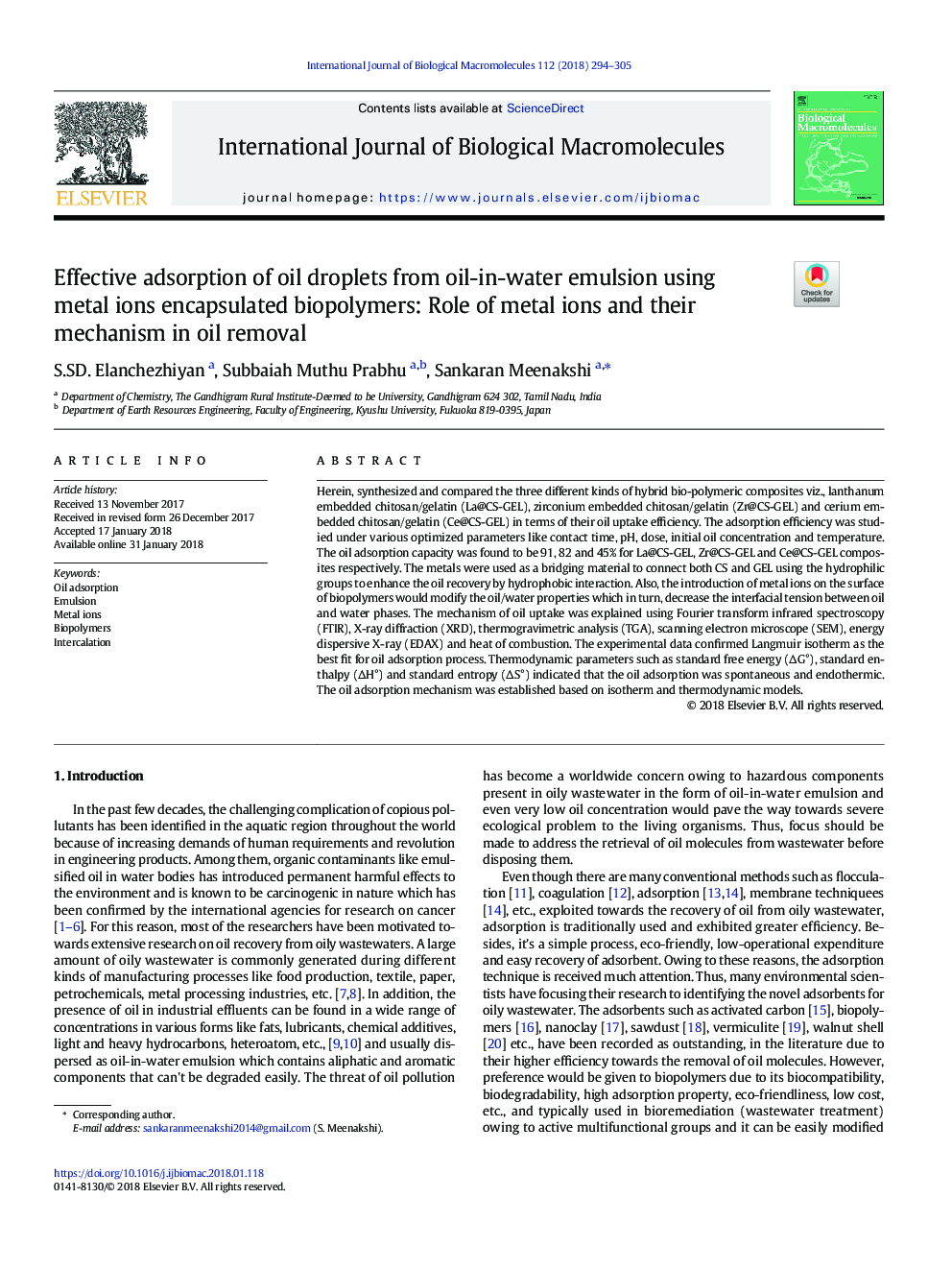| کد مقاله | کد نشریه | سال انتشار | مقاله انگلیسی | نسخه تمام متن |
|---|---|---|---|---|
| 8327593 | 1540202 | 2018 | 12 صفحه PDF | دانلود رایگان |
عنوان انگلیسی مقاله ISI
Effective adsorption of oil droplets from oil-in-water emulsion using metal ions encapsulated biopolymers: Role of metal ions and their mechanism in oil removal
ترجمه فارسی عنوان
جذب مؤثر قطرات نفتی از امولسیون نفت در آب با استفاده از پلیمرهای حاوی یون های فلزی: نقش یون های فلزی و مکانیزم آنها در حذف روغن
دانلود مقاله + سفارش ترجمه
دانلود مقاله ISI انگلیسی
رایگان برای ایرانیان
کلمات کلیدی
جذب روغن، امولسیون یون های فلزی، بیوپلیمرها، تداخل
موضوعات مرتبط
علوم زیستی و بیوفناوری
بیوشیمی، ژنتیک و زیست شناسی مولکولی
زیست شیمی
چکیده انگلیسی
Herein, synthesized and compared the three different kinds of hybrid bio-polymeric composites viz., lanthanum embedded chitosan/gelatin (La@CS-GEL), zirconium embedded chitosan/gelatin (Zr@CS-GEL) and cerium embedded chitosan/gelatin (Ce@CS-GEL) in terms of their oil uptake efficiency. The adsorption efficiency was studied under various optimized parameters like contact time, pH, dose, initial oil concentration and temperature. The oil adsorption capacity was found to be 91, 82 and 45% for La@CS-GEL, Zr@CS-GEL and Ce@CS-GEL composites respectively. The metals were used as a bridging material to connect both CS and GEL using the hydrophilic groups to enhance the oil recovery by hydrophobic interaction. Also, the introduction of metal ions on the surface of biopolymers would modify the oil/water properties which in turn, decrease the interfacial tension between oil and water phases. The mechanism of oil uptake was explained using Fourier transform infrared spectroscopy (FTIR), X-ray diffraction (XRD), thermogravimetric analysis (TGA), scanning electron microscope (SEM), energy dispersive X-ray (EDAX) and heat of combustion. The experimental data confirmed Langmuir isotherm as the best fit for oil adsorption process. Thermodynamic parameters such as standard free energy (ÎG°), standard enthalpy (ÎH°) and standard entropy (ÎS°) indicated that the oil adsorption was spontaneous and endothermic. The oil adsorption mechanism was established based on isotherm and thermodynamic models.
ناشر
Database: Elsevier - ScienceDirect (ساینس دایرکت)
Journal: International Journal of Biological Macromolecules - Volume 112, June 2018, Pages 294-305
Journal: International Journal of Biological Macromolecules - Volume 112, June 2018, Pages 294-305
نویسندگان
S.SD. Elanchezhiyan, Subbaiah Muthu Prabhu, Sankaran Meenakshi,
